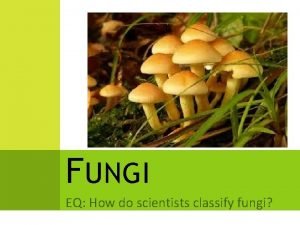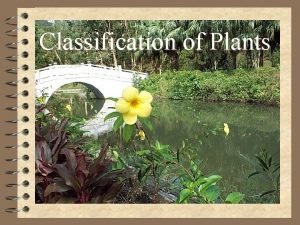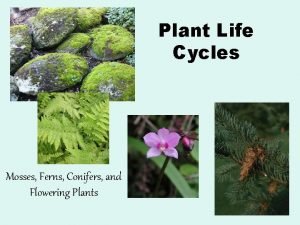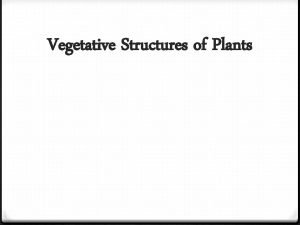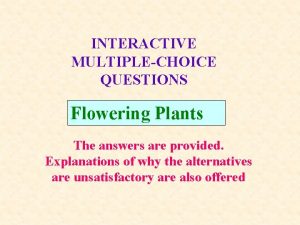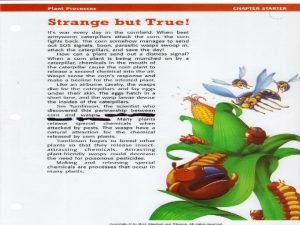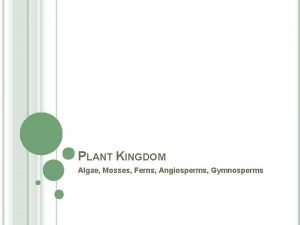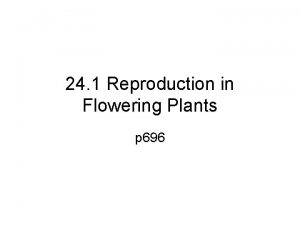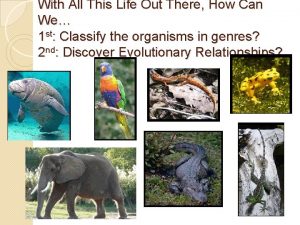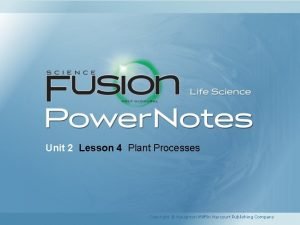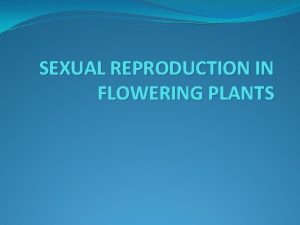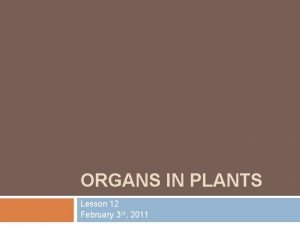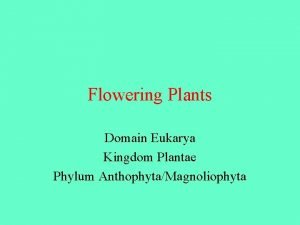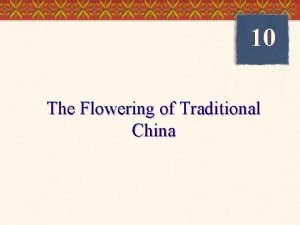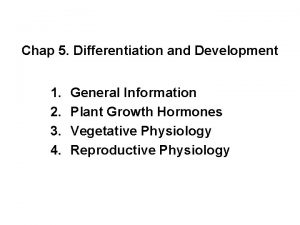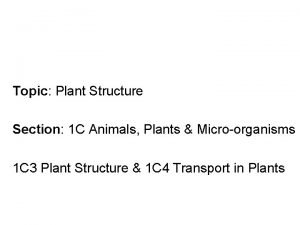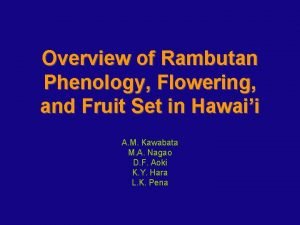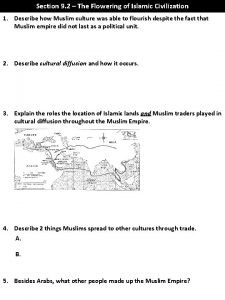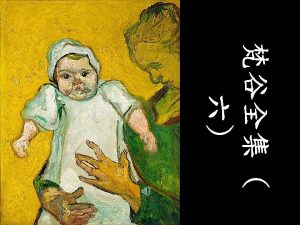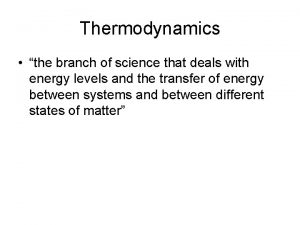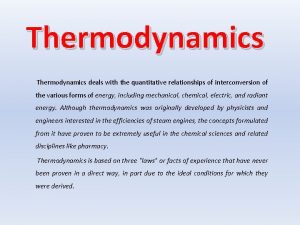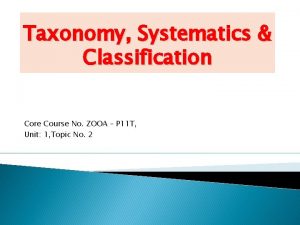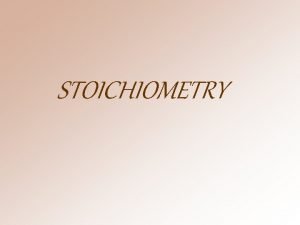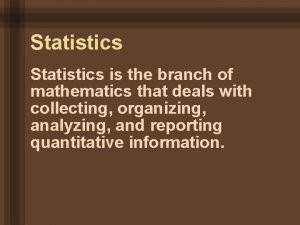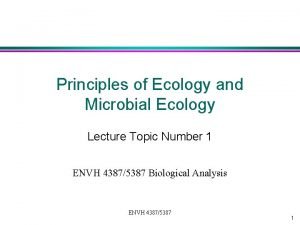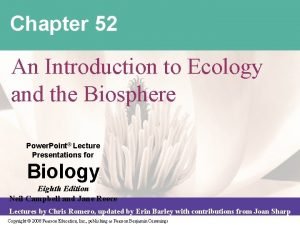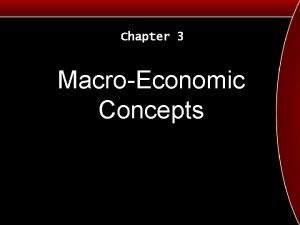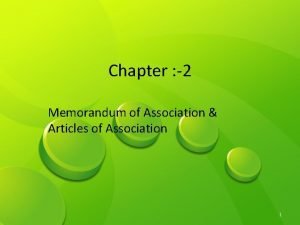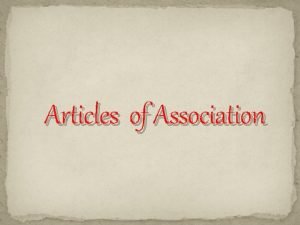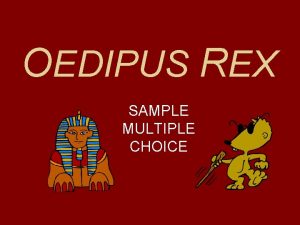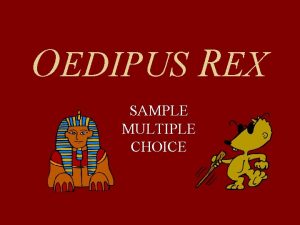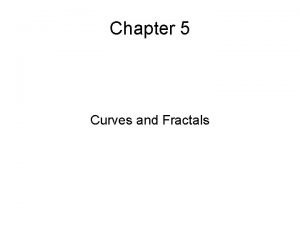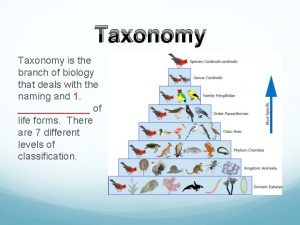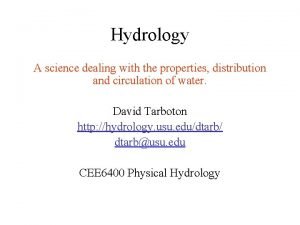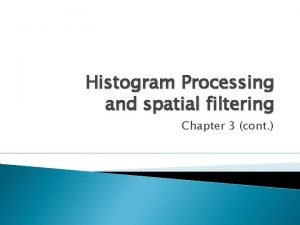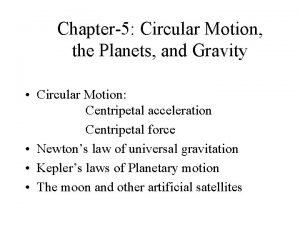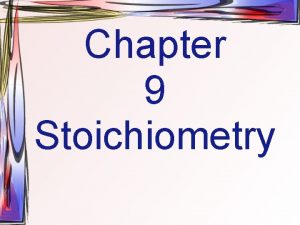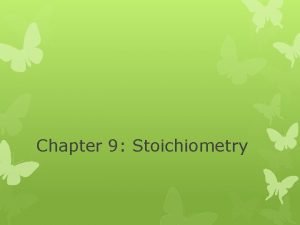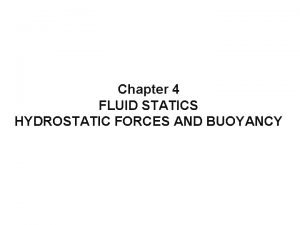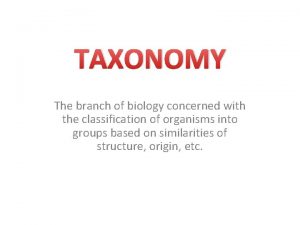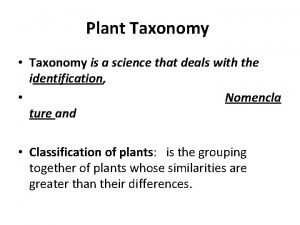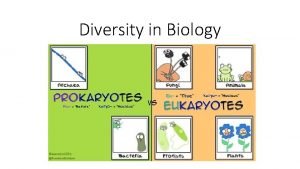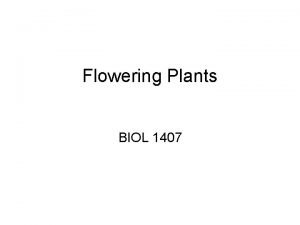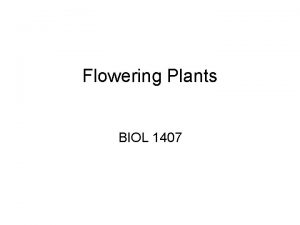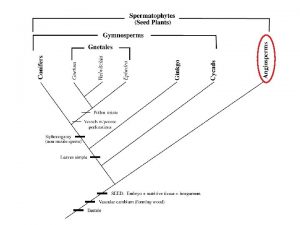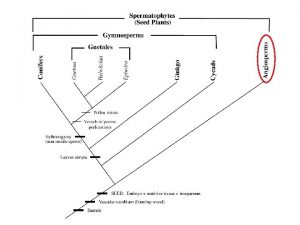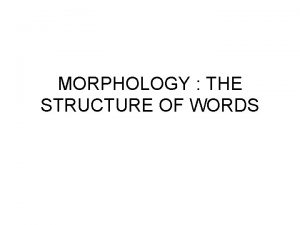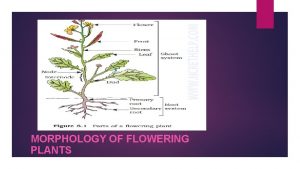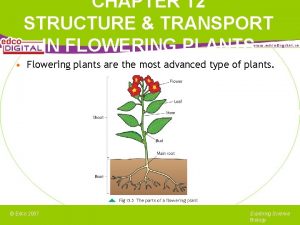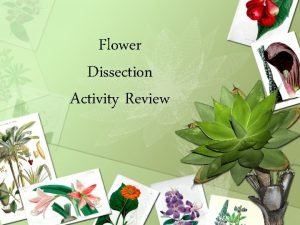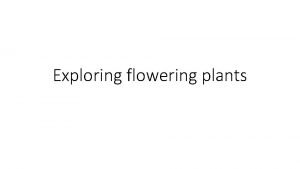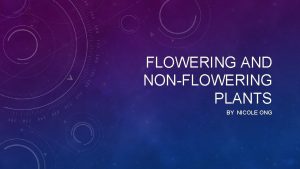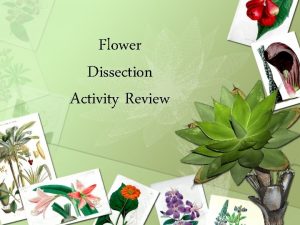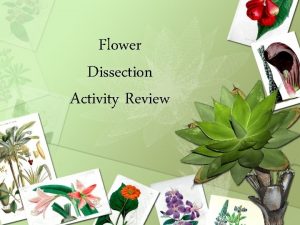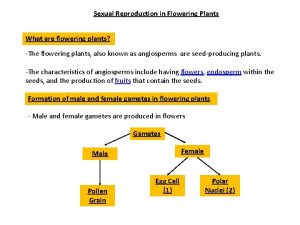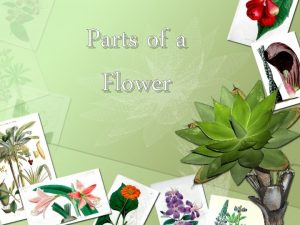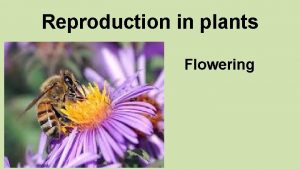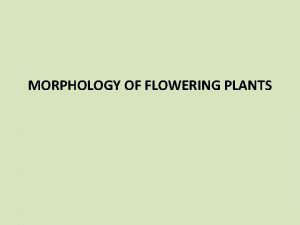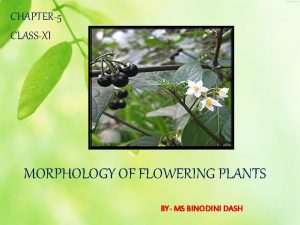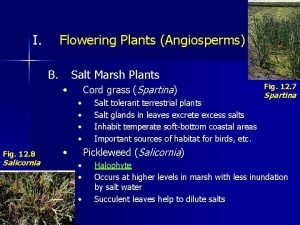CHAPTER 5 MORPHOLOGY OF FLOWERING PLANTS MORPHOLOGY Deals














































































- Slides: 78

CHAPTER: 5 MORPHOLOGY OF FLOWERING PLANTS

MORPHOLOGY: Deals with the study of external structure. In plants morphology is characterised by presence of roots, stems, leaves, flowers and fruits.



THE ROOTS: In dicotyledons generally the radical will give rise to primary root that grows inside the soil. Primary roots bear lateral roots called secondary, tertiary etc roots. The primary roots and its branches constitute tap root system. E. g. Mustard plant.

In monocotyledons the primary root is short lived and is replaced by a large number of roots. These roots originate from the base of the stem. This type of root is called fibrous root system. E. g. Wheat plant. In some plants (Monstera, banyan), roots arise from parts of the plant other than radical. Such roots are called adventitious root.

TAP ROOT

FIBROUS ROOT

ADVENTITIOUS ROOT


FUNCTION OF ROOT: Absorption of water and minerals from the soil. Provide proper anchorage to the plant parts. Storage of reserve food materials. Synthesis of plant growth regulators.

REGIONS OF THE ROOTS: Apical region of root is covered by thimble like structure called root cap Root cap helps in protection of tender apex of the root as it makes its way through the soil. Above the root cap (few mm) there is region of meristematic activity.

The cells of meristematic region are very small thin walled with dense protoplasm. They are in a state of continuous division. Above the region of meristematic activity there is a region of elongation. The cells of this region undergo rapid elongation and enlargement, thus responsible for growth of the root in length.

The cells of the elongation zone gradually differentiate and mature which is called as region of maturation. Some epidermal cells of this region forms very fine and delicate thread like structures called root hairs. Root hairs absorb water and minerals from the soil.


MODIFICATION OF ROOT: Roots in some plants are modified to perform additional functions: Storage of food: Carrot, turnip, sweet potato. Prop root: Supporting root in Banyan tree. Stilt root: Supporting root in maize, sugar cane. Pneumatophores: Respiratory roots in Rhizophora ( present in swampy area)

MODIFICATION OF ROOTS

Ascending THE STEM part bearing branches, leaves, flowers and fruits. Develops from plumule of the embryo. Bears nodes and internodes. Nodes are the regions where leaves are born. The portion between two nodes is called internode.

Stem bears buds (terminal or axillary). Generally green when young but become woody and dark brown later on. It helps in spreading out branches bearing leaves, flowers and fruits. It helps in conduction of water and minerals as well as food. Some stems perform additional functions like storage of food, support, protection, vegetative propagation.

MODIFICATION OF STEMS Storage of food: Underground stems of potato, ginger, turmeric, zaminkand, colocasia. Perennation: Underground stems of potato, ginger, turmeric, zaminkand, colocasia. Tendril: Develop from axillary buds are slender and spirally coiled and help plants to climb. E. g. cucumber, pumpkins, watermelon, grapevines etc.

Thorns: Axillary buds also modified into woody straight and pointed thorns that helps in protection from browsing animals. E. g. Bougainvillea, citrus etc. Photosynthetic: Stems modified into flattened or fleshy cylindrical structures that contain chlorophyll and carry out photosynthesis. Spread: Grass and straw berry. Vegetative propagation: Mint, jasmine etc.




A THE LEAF lateral, generally flattened structure borne on the stem. It develops at the node and bears a bud in its axil. The axillary bud later on develops into a branch. Leaves originate from shoot apical meristems and are arranged in an acropetal order. Vegetative organ for photosynthesis.


There PARTS OF LEAF are three main parts: leaf base, petiole and lamina. The leaf is attached to the stem by the leaf base and may or may not bear two lateral small leaf like structures called stipules. In monocots the leaf base expands into a sheath covering the stem partially or wholly.

In some leguminous plants the leaf base may become swollen (pulvinus). Petiole helps in holding the lamina to light. Long, thin flexible petioles allow leaf lamina to flutter in wind that helps in cooling of leaf and bringing fresh air to leaf surface. The lamina is the green expanded part of the leaf with veins and vein lets. There is a middle prominent vein called midrib.

Veins provide rigidity to the leaf blade and act as channels of transport of water, minerals and food materials. The shape, margin, apex, surface and extent of incision of lamina varies in different leaves.

It VENATION: is the arrangement of veins and the vein lets in the lamina of leaf. When the vein lets form a net work, the venation is termed as reticulate (dicot). When the veins run parallel to each other within the lamina, the venation is parallel (monocot).

RETICULATE VENATION PARALLEL VENATION

TYPES Simple OF LEAVES Leaf – Lamina is entire or if incised does not touch the midrib. Compound Leaf- Incision of lamina reaches the midrib, forms number of leaflets and rachis.


TYPES OF COMPOUND LEAF Pinnately compound: A number of leaf lets are present on a common axis the rachis, which represents the midrib of the leaf. E. g. neem. Palmately compound: The leaf lets are attached at a common point i. e. at the tip of petiole. E. g. silk cotton.



PHYLLOTAXY Arrangement of leaves on the stem or branch is called phyllotaxy. It is of alternate, opposite or whorled. Alternate: Single leaf arises at each node in alternate manner. E. g. China rose. Opposite: A pair of leaves arise at a node and opposite to each other. E. g. Calotropis, guava etc. Whorled: More than two leaves arise at a node and form a whorl. E. g. Alstonia.



MODIFICATION OF LEAVES Tendril: For climbing (peas) Spine : For defense (cactus) Storage of food: Fleshy leaves of onion and garlic. Leaves of certain insectivorous plants (pitcher plant, venus-fly trap) are also modified leaves. Reduced leaves: In Australian acacia the leaves are small and short lived. In this case the petioles expands and become green to perform photosynthesis.

TENDRIL SPINE STORAGE

The THE INFLORESCENCE arrangement of flowers on the floral axis. Two major types- racemose and cymose There are some special types also. Racemose: The main axis continues to grow, the flowers are borne laterally in an acropetal succession. Cymose: The main axis terminates in a flower, hence is limited in growth. The flowers are borne in a basipetal order.


Racemose Inflorescence




FLOWER Reproductive part of the plant. A typical flower has four different kinds of whorls arranged successively on the swollen end of the stalk or pedicel, called thalamus or receptacle. Four parts are calyx, corolla, Androecium and gynoecium. Calyx and corolla : Accessory whorls. Androecium and gynoecium : Reproductive and essential whorls.

In some flowers (lily) the calyx and corolla are not distinct and are called Perianth. (tepals) When a flower has both androecium and gynoecium it is called bisexual flower. A flower having either only androecium (stamen) or only gynoecium (carpel) is unisexual. The flower may be actinomorphic (radial symmetry) or zygomorphic (bilateral symmetry).

Actinomorphic flower: A flower can be divided into two equal halves in any radial plane passing through the centre. E. g. Mustard, Datura, Chilli. Zygomorphic flower: A flower can be divided into two similar halves only in one particular vertical plane. E. g. pea, gulmohur, bean, cassia etc. Asymmetric (irregular) flower: It cannot be divided into two similar halves by any vertical plane passing through the centre. E. g. canna.

ØA flower may be trimerous, tetramerous or pentamerous when the floral appendages are in multiple of 3, 4 or 5 respectively. Ø Flowers may be bracteate (reduced leaf at the base of pedicel) or ebracteate (without reduced leaf at the base pedicel). Ø Flowers may be hypogynous (the gynoecium occupies the highest position while the other parts are situated below it). The ovary of such flowers is called superior e. g. mustard, china rose, brinjal etc.

Ø Flowers may be perigynous(gynoecium is situated in the centre and other parts of the flower are located on the rim of the thalamus almost at the same level. The ovary is called half inferior. E. g. plum, rose, peach. Ø Flowers may be epigynous (The margin of thalamus grows upward enclosing the ovary completely and getting fused with it, the other parts of flower arise above the ovary. The ovary is said to be inferior. E. g. guava, cucumber, ray florets of sunflower.

Parts of flower: ØCalyx: Outer most whorl. § Members are called sepal. § Generally green, leaf like. § Helps in protection of flower in bud stage. § May be gamosepalous (united) or polysepalous (free). §

ØCorolla: Composed of petals. § Usually brightly coloured to attract insects for pollination. § May be gamopetalous or polypetalous. § Shape and colour varies. § Maybe tubular, bell shaped, funnel shaped or wheel shaped. §

ØAndroecium: Composed of stamens. § Each stamen consists of a stalk(filament) and an anther. § It is the male reproductive organ. § Each anther is bilobed and each lobe has two chambers, the pollen sacs. § The pollen grains are produced in pollen sacs. § Sterile stamen is called staminode. §

§ § Stamens may be epipetalous, as in brinjal (attached to petals) or epiphylous as in lily (attached to perianth). Stamens may be polyandrous (remain free) or may be united. Stamens may be united into one bundle (monadelphous – china rose), or two bundles (diadelphous –pea) or into more than two bundles (polyadelphous- citrus). Within a flower there may be the variation in the length of filament. E. g. mustard, salvia etc.

ØGynoecium: Female reproductive part of a flower. § Made up of one or more carpel. § A carpel consists of stigma, style and ovary. § Ovary is the enlarged basal part. The style connects the ovary to stigma. The stigma is usually at the tip of style and is the receptive structure for pollengrains. §

Each ovary bears one or more ovules attached to a flattened cushion like placenta. § When more than one carpel is present they may be free (apocarpuslotus, rose) or fused (syncarpousmustard, tomato). § After fertilization, the ovules develop into seeds and the ovary into a fruit. §


Aestivation: The mode of arrangement of sepals or petals in floral bud with respect to the other members of the same whorl is called aestivation. Types of aestivation: Ø Valvate Ø Twisted Ø Imbricate Ø Vexillary

Valvate: When sepals or petals in a whorl just touch one another at the margin, without overlapping, as in Calotropis it is called Valvate. Twisted: If one margin of the appendages overlaps that of the next one and so on it is called twisted. E. g. china rose, lady’s finger, cotton.

Imbricate: If the margin of sepals or petals overlap one another but not in any particular direction, it is called imbricate. E. g. Cassia, gulmohur. Vexillary: In pea and bean flowers there are five petals, the largest (standard) overlaps the two lateral petals (wings) which in turn overlap the two smallest anterior petals (keel). This type is called Vexillary or papillionaceous aestivation.


Placentation: It is the arrangement of ovules within the ovary. It is of different types: § Marginal § Axile § Parietal § Central § Basal § Free- central

Marginal Placentation: The placenta forms a ridge along the ventral suture of the ovary and the ovules are borne on this ridge forming two rows. E. g. Pea. Axile Placentation: The placenta is axial and the ovules are attached to it in a multilocular ovary. E. g. China rose, tomato, lemon.

Parietal Placentation: The ovules develop on the inner wall of the ovary or on peripheral part. Ovary is one chambered but it becomes two chambered due to formation of the false septum. E. g. Mustard, Argemone. Free central Placentation: When the ovules are borne on central axis and septa are absent. E. g. Dianthus, Primose etc. Basal Placentation: The placenta develops at the base of ovary and a single ovule is attached to it. E. g. Sunflower, Marigold, Tulsi.


The fruit: Ø It is a mature or ripened ovary, developed after fertilization. Ø Fruit which is developed without fertilization is called Parthenocarpic fruit. Ø The fruit consists of a wall or pericarp and seeds. Ø The pericarp may be dry or fleshy. Ø When pericarp is thick and fleshy it is differentiated into outer epicarp, middle mesocarp and inner endocarp. Ø In mango and coconut the fruit is called drupe. They develop from monocarpellary superior ovaries and are one seeded.


The seed: The ovules after fertilization develops into seeds. v. It consists of seed coat and embryo. v. The embryo consists of a radicle, an embryonal axis and one or two cotyledons. v

Structure of a dicotyledonous seed: Ø The outer most covering of a seed is the seed coat. Ø The seed coat has two layers, out testa and inner tegmen. Ø Presence of hilium (a scar) on the seed coat through which the developing seeds are attached to the fruit. Ø There is a small pore called micropyle above the helium. Ø Within the seed coat embryo is present.

Ø Embryo consists of an embryonal axis and two cotyledons. Ø Cotyledons are fleshy and full of reserve food materials. Ø Radicle and plumule are present at the two end of embryonal axis. Ø Seeds may be endospermic (endosperm formed as a result of double fertilization e. g. castor) or non -endospermic e. g. bean, gram, pea.

Structure seed: Ø Generally of a monocotyledonous endospermic but some as in orchids are non-endospermic. Ø In the seeds of cereals such as maize the seed coat is membranous and generally fused with the fruit wall. The endosperm is bulky and stores food. Ø The outer covering of endosperm separates the embryo by a proteinous layer called aleurone layer.

Ø The embryo is small and situated in a groove at one end of the endosperm. Ø Embryo consists of one large and shield shaped cotyledon (scutellum) and a short axis with plumule and a radicle. Ø The plumule and radicle are enclosed in sheaths which are called coleoptile and coleorhiza.


Semi-Technical description of a typical flowering plant: Ø Br – Bracteate Ø K – Calyx Ø C – Corolla Ø P – Perianth Ø A – Androecium Ø G – Gynoecium Ø G – For superior ovary. _ Ø G – For inferior ovary.

ØO - For male Ø O – For female ØO ØO - For bisexual – Actinomorphic Ø % - Zygomorphic. Ø Fusion: By enclosing the figure within bracket.

Ø Adhesion: By a line drawn above the symbols of the floral parts. Ø The position of mother axis: By a dot on the top of floral diagram.
 Classification of non flowering plants
Classification of non flowering plants Ascular plants
Ascular plants Classify non flowering plants
Classify non flowering plants Stem modification in mint and jasmine
Stem modification in mint and jasmine Morphology deals with
Morphology deals with Conifers life cycle
Conifers life cycle Part of flower
Part of flower Multiple choice questions on flowering plants
Multiple choice questions on flowering plants Study of plants is called
Study of plants is called Different parts of plants and their functions
Different parts of plants and their functions Mosses ferns gymnosperms angiosperms
Mosses ferns gymnosperms angiosperms Flower female parts
Flower female parts Cladogram of five indoor plants
Cladogram of five indoor plants Unit 2 lesson 12 flowering plants
Unit 2 lesson 12 flowering plants Sexual parts of flower
Sexual parts of flower Lesson 12 flowering plants
Lesson 12 flowering plants Produces pollen grain
Produces pollen grain Plantae phylum
Plantae phylum 8 inflectional morphemes
8 inflectional morphemes Vascular vs nonvascular plants
Vascular vs nonvascular plants Non vascular plants
Non vascular plants Photosynthesis equation
Photosynthesis equation This chapter deals with
This chapter deals with The flowering of romanticism summary
The flowering of romanticism summary The flowering of traditional china
The flowering of traditional china How to put more nitrogen in soil
How to put more nitrogen in soil Meiosis
Meiosis Ethylene pineapple flowering
Ethylene pineapple flowering Vegetables parts of plant
Vegetables parts of plant Example of foreshadowing in romeo and juliet
Example of foreshadowing in romeo and juliet Kiwibann
Kiwibann The flowering of islamic civilization
The flowering of islamic civilization Flowering plum orchard van gogh
Flowering plum orchard van gogh Thermodynamics is a branch of science which deals with
Thermodynamics is a branch of science which deals with Thermodynamics deals with
Thermodynamics deals with Microtaxonomy deals with
Microtaxonomy deals with Stoichiometry deals with.
Stoichiometry deals with. What is composition stoichiometry
What is composition stoichiometry Statistics is a branch of mathematics
Statistics is a branch of mathematics Ecology deals with
Ecology deals with Marketingmanagement
Marketingmanagement Business ethics deals primarily with
Business ethics deals primarily with Management deals with
Management deals with Karl pearson coefficient of correlation example
Karl pearson coefficient of correlation example Ecology deals with
Ecology deals with P1-p2
P1-p2 Macroeconomics deals with?
Macroeconomics deals with? Articles of association deals with
Articles of association deals with Fluid statics deals with
Fluid statics deals with Piggybacking in go-back-n arq
Piggybacking in go-back-n arq Articles of association deals with
Articles of association deals with Taxonomy non examples
Taxonomy non examples Oedipus rex mcq
Oedipus rex mcq Oedipus multiple choice questions
Oedipus multiple choice questions Nonfiction deals with facts.
Nonfiction deals with facts. Descriptive lexicology
Descriptive lexicology What are curves in computer graphics
What are curves in computer graphics Prosperity deals
Prosperity deals Brigadoon hotel deals
Brigadoon hotel deals King philip coughed on fred and he got sick
King philip coughed on fred and he got sick Stylistic devices in stylistics
Stylistic devices in stylistics Lexical means
Lexical means Proposal penawaran perangkat lunak
Proposal penawaran perangkat lunak Marketing more than any other business function deals with
Marketing more than any other business function deals with Smore stoichiometry
Smore stoichiometry Hydrology is science which deals with
Hydrology is science which deals with Histogram processing techniques
Histogram processing techniques Kepler's second law deals with
Kepler's second law deals with Stoichiometry deals with
Stoichiometry deals with Stoichiometry deals with
Stoichiometry deals with Fluid statics deals with
Fluid statics deals with Price off deals sales promotion
Price off deals sales promotion Theme of last lesson
Theme of last lesson Singlets needle leaves
Singlets needle leaves Taxonomy is the science that deals with
Taxonomy is the science that deals with Marketing more than any other business function deals with
Marketing more than any other business function deals with The discipline that deals with what is good and bad
The discipline that deals with what is good and bad Taxonomy is the science that deals with
Taxonomy is the science that deals with Capital budeting deals with
Capital budeting deals with

